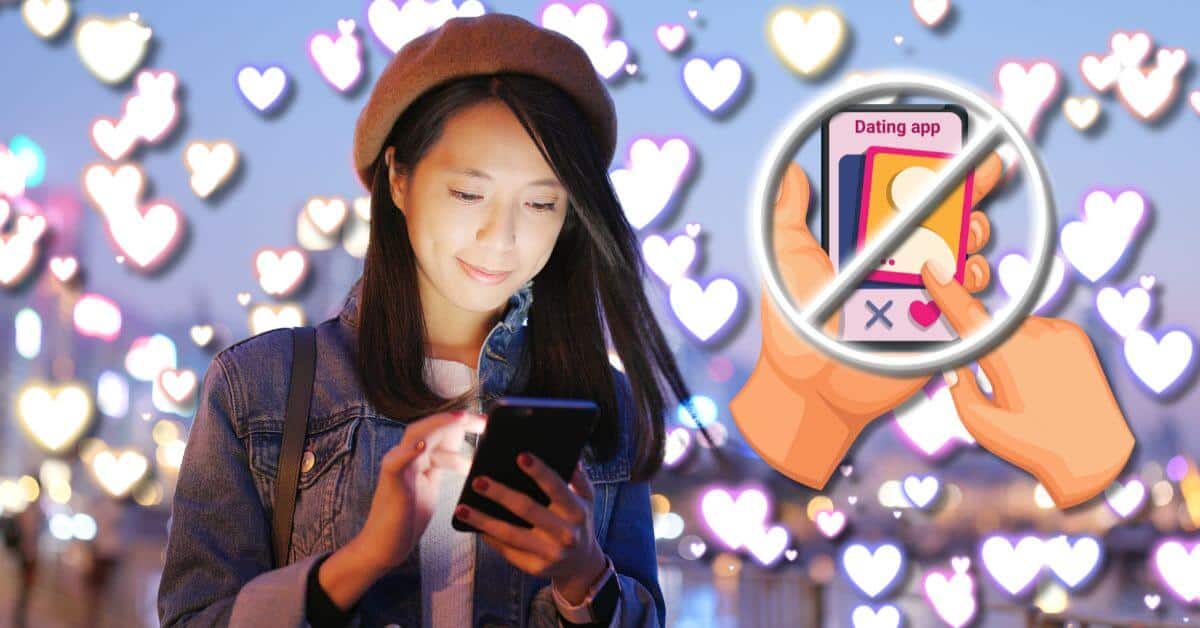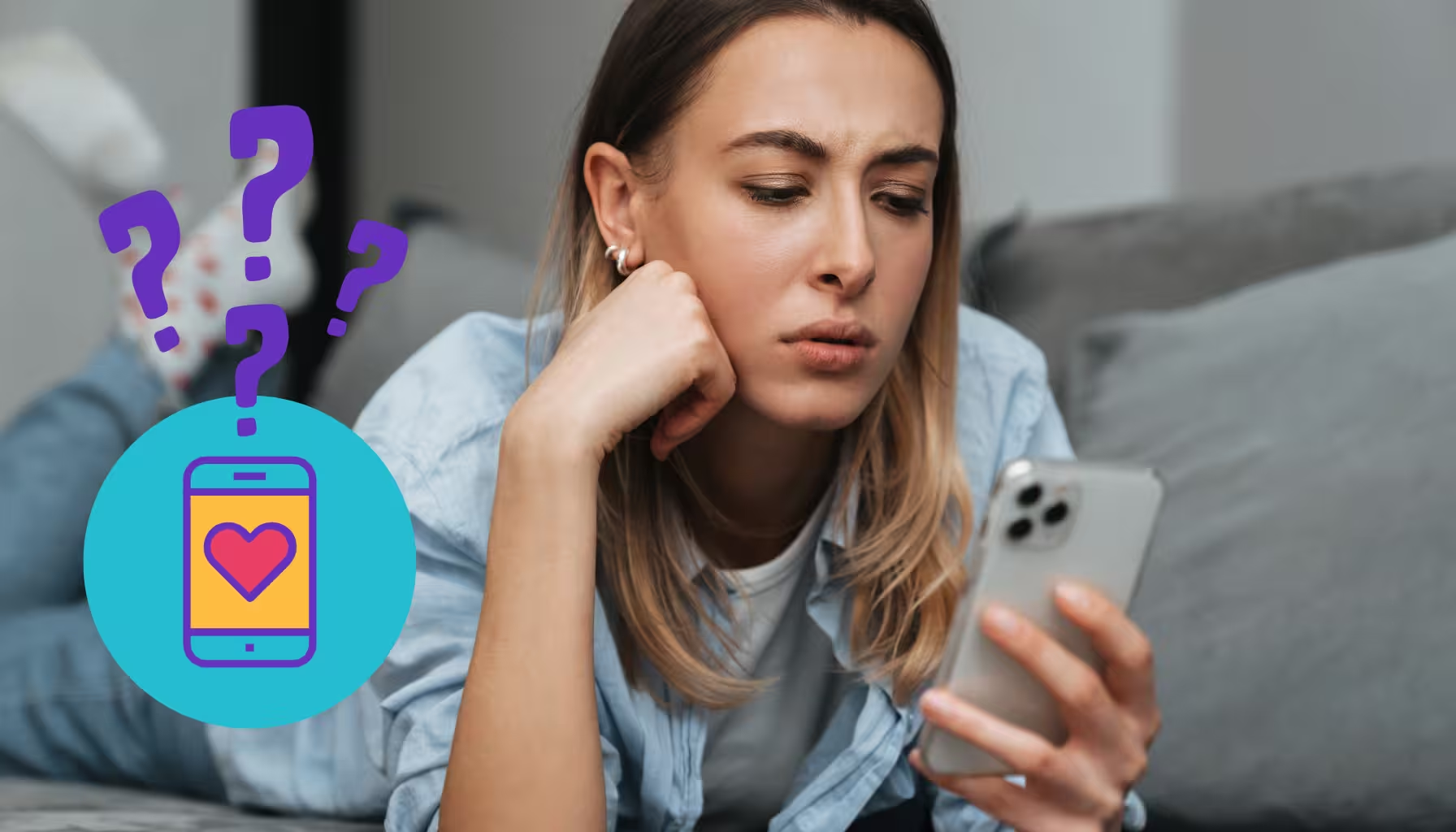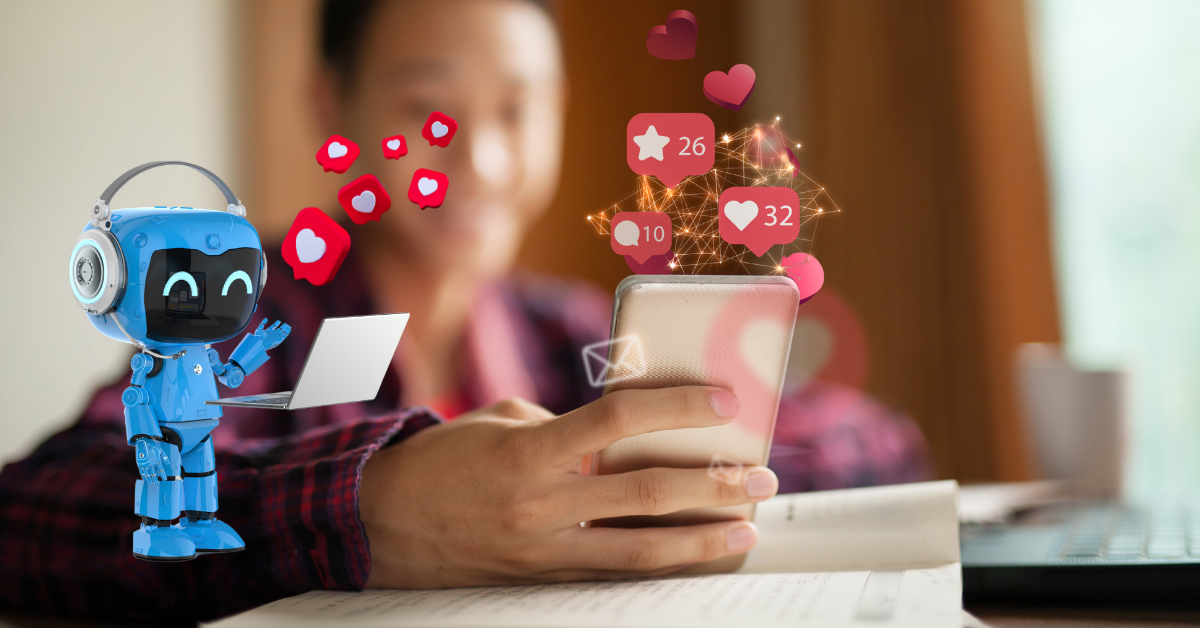Are you tired of swiping left, right, up, and down in search of the perfect match?
Do you feel stuck in a never-ending game of dating app roulette, where every spin lands you on yet another disappointing profile?
Well, if you answered yes, you’re not the only one. There’s an online dating rebellion brewing. But it’s not that people are saying no to all dating apps in general. Instead, they’re becoming exhausted by swiping culture and the seemingly endless options dating sites like Tinder offer.
A study by BMC Psychology investigated apps like Tinder, which they call Swipe-Based Dating Applications or SBDAs. While they function similarly to other online dating platforms, they offer the unique feature of “swiping” on another user’s profile. Left means yes. Right means nope. The study wanted to investigate a correlation between swiping culture and mental health and aimed to see if SBDA users reported higher levels of psychological distress, anxiety, depression, and lower self-esteem than individuals who didn’t use SBDAs.
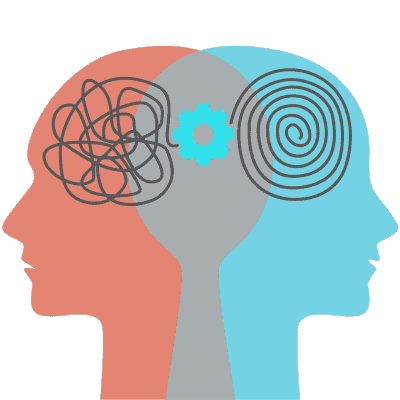
And surprise, surprise, it turned out that users who relied on apps that included swiping complained of higher levels of stress than users who used dating apps that didn’t have this option. So why is this the case?
The Psychological Impact of Swiping Culture
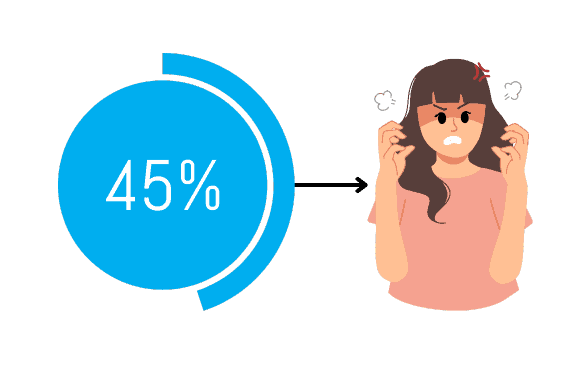
There’s a significant difference between apps that rely on swiping over other dating platforms that prioritize more intimate connections. Dating fatigue is actually a thing. It occurs when individuals experience exhaustion and frustration from swiping endlessly on an app hoping for a match.
According to a recent study from the Pew Research Center, 45% of people who used dating apps said they left them feeling more frustrated than hopeful. Is it all dating apps or just some over the others?
A study published in the National Library of Medicine called Love Me Tinder: Body Image and psychosocial functioning among Men and Women aimed to investigate Tinder’s psychological impact on users. The researchers asked individuals who had used Tinder about their self-esteem, body image, and psychological well-being.
The results showed that Tinder users had lower self-esteem and a more negative body image than those who did not use the app. Many were more likely to report symptoms of depression and anxiety.
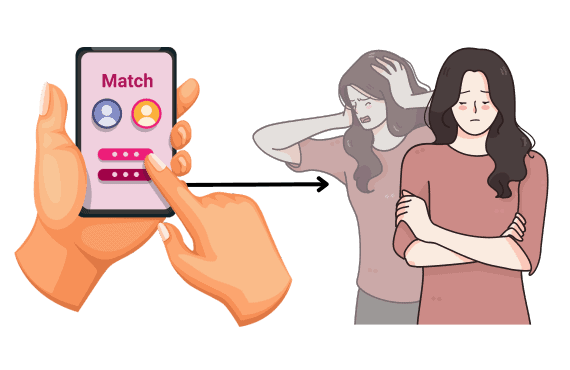
And if you think about it, it makes sense. When you decide (by swiping) whether to match with someone based purely on their photo, it’s bound to create negative perceptions about body image. This study found that swiping culture created a dependency on superficial aspects and ultimately resulted in a negative impact on Tinder users’ self-esteem and psychological well-being.
The Impact of Social Comparison
According to that same study, a dependency on swiping is more likely to cause people to internalize appearance ideals by comparing themselves to others. Social comparison is a psychological phenomenon in which individuals evaluate their own abilities, traits, and successes in relation to others. In online dating, social comparison can be a significant factor in how users evaluate potential partners and their self-worth.

Research has shown that social comparison can positively and negatively affect individuals’ well-being. With online dating, a social comparison may lead to increased motivation to improve one’s own profile, especially if one matching is dependent solely on their photos. Because of this, it may also lead to negative feelings of inadequacy, low self-esteem, and depression, particularly if users perceive they aren’t matching up to others.

Apps like Tinder, which rely on swiping culture, may contribute to social comparison and competition in several ways. The app’s algorithm presents users with a constant stream of potential matches, leading to a sense of infinite options and potential rejection. This can lead to a psychological phenomenon known as choice overload, a cognitive occurrence in which too many options or choices can lead to difficulty deciding, increased decision-making time, and decreased satisfaction with the final decision.
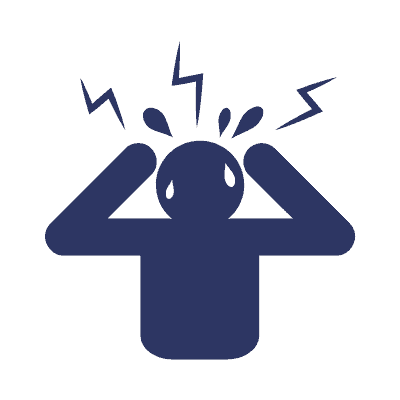
Choice overload can occur when individuals are presented with a seemingly endless stream of potential matches, leading to decision fatigue and a sense of being overwhelmed. When presented with too many options, individuals may experience decision paralysis or the inability to decide due to the overwhelming number of choices. Individuals may feel increased pressure to make the “perfect” decision, leading to anxiety and stress. Apps like Tinders rely on this with a structure based on showing profile photos first.
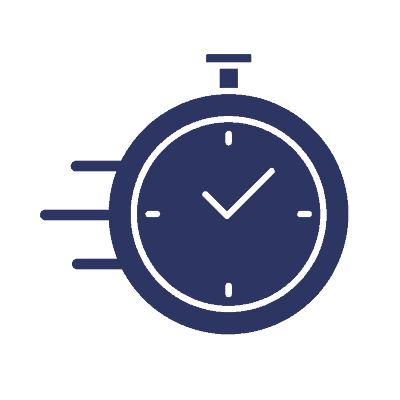
Choice overload may lead to increased superficial evaluation of potential matches, as users feel pressured to quickly make decisions and move on to the next profile. This can also lead users to engage in a rapid, superficial evaluation of potential matches based on photos and limited information, creating a high-pressure environment.

Tinder design also emphasizes swiping and matching as a game-like activity, further reinforcing the idea of competition and comparison. Users may feel pressure to “win” matches or match with individuals perceived as highly desirable by others, leading to a sense of status anxiety and potential disappointment. Swiping creates an emphasis on physical appearance as the primary factor in finding a partner, which can contribute to objectification and the likelihood that users may feel pressure to conform to conventional beauty standards or engage in a “beauty contest” mentality.
So what’s the alternative?
The Significance of Slow Dating
Dating apps like Zoosk and eHarmony rely on behavioral matching, a more sophisticated and thoughtful approach to connecting potential partners than the swipe culture of other dating apps. Behavioral matching is based on algorithms that analyze users’ preferences, interests, values, and behaviors and then recommend matches that are compatible with those traits. This approach promotes more meaningful connections between users and helps to eliminate the superficiality and objectification that can be present in swiping culture.
Unlike the rapid-fire swiping of other dating apps, behavioral matching systems encourage users to take time to get to know each other and to communicate and share more about themselves. This can help to establish deeper emotional connections and foster a greater sense of intimacy and trust. Behavioral matching can also help to reduce the stress and pressure of dating, as users are matched with potential partners based on more meaningful criteria rather than just physical appearance.
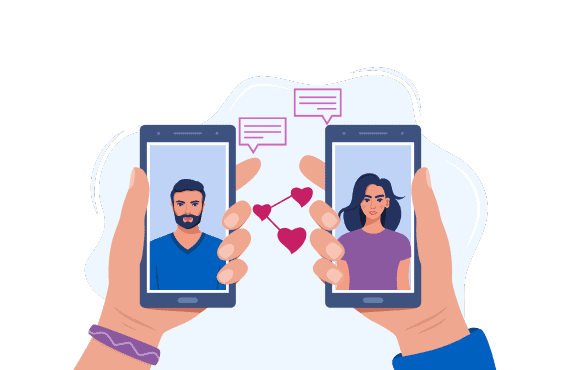
Besides promoting healthier connections, behavioral matching can also help to reduce the likelihood of negative experiences such as ghosting, catfishing, and harassment. By matching users based on shared values and behaviors, dating apps can help to create a safer and more respectful dating environment.
Apps like this encourage slow dating, which emphasizes taking a more deliberate and intentional approach to dating rather than rushing into relationships or making snap judgments based on superficial criteria. Slow dating involves taking the time to get to know potential partners, engaging in meaningful communication, and building emotional connections.
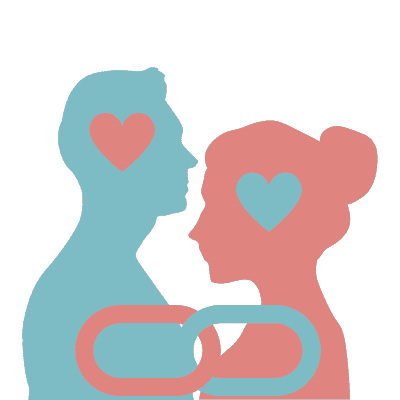
A study on slow dating showed that individuals who communicated more frequently with their online dating partners and disclosed more personal information reported higher levels of trust and intimacy in their relationships.
Taking a slower approach to communication, such as not immediately exchanging personal information or meeting in person right off the bat, was associated with higher levels of trust and intimacy.
Jess McCann, author of “If Love is a Blessing, Why do I Feel Cursed?” described slow dating as “getting to know someone on a mental and emotional level before moving into physical intimacy.”
Slow dating can take many forms, but some common practices include setting specific goals and intentions for dating, taking time to carefully evaluate potential partners, and prioritizing emotional connections and compatibility over physical appearance or surface-level qualities.
The benefits of slow dating include a greater sense of self-awareness and intentionality in one’s dating life and a greater likelihood of building meaningful and long-lasting relationships. By taking the time to truly get to know potential partners, individuals can avoid rushing into relationships that may not be right for them and instead focus on building connections based on shared values, interests, and goals.
Slow dating may also help to reduce the negative effects of dating apps and swiping culture, which can lead to feelings of decision fatigue, anxiety, and superficiality. Dating apps like Zoosk and eHarmony only help bolster this mentality by encouraging users to spend more time using the app to converse with partners. Essentially, the more you use the app, the more likely your future matches will be compatible with you.
Tailored Matches and Personalization
Research has suggested that personalization in online dating can improve users’ experiences. Why do you think personalized matches may be more effective than non-personalized matches? One possibility is that personalization leads to greater perceived compatibility between partners. When users are presented with matches that share similar interests, values, and characteristics, they may feel a greater sense of connection and understanding. If I’m a fan of everything horror and really need someone to join me for my fourth time binging The Last of Us, the likelihood of me matching with someone who will be open to wasting a weekend like that is increased if I personalize my dating profile.
Some users may become overly focused on finding the “perfect” match based on their stated preferences, leading to overly narrow search criteria and potentially missing out on compatible partners. But that’s where apps like Zoosk sweep in with extra help. Zoosk’s algorithm analyzes users’ behavior on the site, including their likes, dislikes, and interactions with other users. Then it suggests profiles of individuals who are likely to be compatible with the user’s interests and goals.
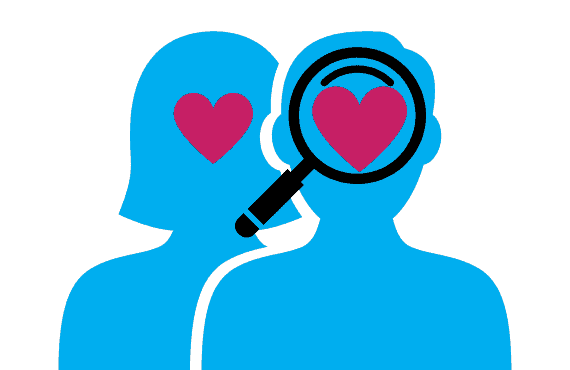
Users who sign up for Zoosk and create a profile provide information about themselves, including their age, location, interests, and relationship goals. The algorithm uses this information to generate an initial set of potential matches. As users interact with the site, view other profiles, and communicate with other users, the algorithm continues to learn about their preferences and adjusts its recommendations accordingly.
The Power of Authenticity
So why does this make a difference? As someone who has dabbled in all the different dating apps, let me put it this way. It’s a lot faster and easier to set up a Tinder or Bumble profile. You add a few descriptions and some good photos, and you start swiping. But with apps like eHarmony and Zoosk, you’re putting more effort into the process at the onset. You’re spending your time answering questions about yourself, and while this may seem time-consuming, the payoff is much more rewarding.

Plus, there’s that thing called the sunk cost fallacy, a cognitive bias in which individuals decide based on the number of resources and time they have already invested in a particular course of action–instead of focusing on the potential for future gains or losses. The more time you put into creating your dating profile, the more likely you’re going to use it and the less likely you’ll be focused on the result.
And when you answer questions about yourself before matching people, you’re not just putting yourself out there, but you’re doing it authentically. The more authentic and real you are in your profile, the more likely you’ll match with someone who shares your values, and the more likely this will lead to a successful and satisfying relationship. Dating apps like eHarmony and Zoosk emphasize authenticity and matching based on personality and shared values and are less likely to cause dating fatigue because the chances of having a genuine connection are increased.
Conclusion
So there you have it! You don’t need to throw in the towel on dating apps altogether. If you’re overwhelmed by the swiping culture of apps like Tinder, or if you’re getting “texting thumb” (which is a real thing that can be caused by swiping too much), then maybe take a break from the apps that prioritize superficial qualities. Apps that encourage genuine connections and slow dating and require you to answer authentic questions about yourself are more likely to end with successful and satisfying connections.
